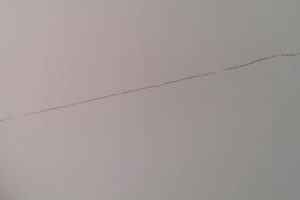Even light rain can quietly carry away centimetres of topsoil, unless you put nature’s own anchors to work. By planting deep-rooted native species, you build an invisible safety net that keeps soil where it belongs, filters runoff, and boosts local biodiversity. Over the next five minutes you’ll meet the 10 best species for rock-solid erosion control and the exact moves to get them growing.
In this article, you’ll learn how to:
- Which natives drill roots 1–3 m deep and knit soil like rebar
- How to layer pioneers, anchors, and groundcovers for permanent erosion control
- Two rookie mistakes that make slopes more unstable (and how to dodge them)
- When to call in pros for hard-landscaping, hydroseeding or drainage back-up
Deep-Rooted Kiwi Plants that Prevent Soil Loss
- Rapid Firestarter
Kānuka (Kunzea ericoides)
Kānuka is a small evergreen tree often found pioneering on disturbed slopes. It can grow up to 10 meters tall with a wiry, deep root system that helps bind fragile soils. Kānuka thrives in poor, dry conditions and on steep hillsides where other trees struggle. It’s very wind and drought tolerant, making it excellent for exposed sites. As a pioneer species, dense kānuka stands can quickly colonise eroding land and create a protective plant cover. Over time, they shelter other native plants to grow beneath them, aiding natural succession.
- Growth: Fast, forms groves on open slopes
- Sun: Full sun – light shade
- Soil: Dry, rocky, low fertility
- Erosion Control: Fibrous roots grip loose ground, litter improves soil structure
2. Self-Seeding Blanket
Mānuka (Leptospermum scoparium)
Mānuka (tea tree) is another hardy pioneer shrub/tree, closely related to kānuka. It usually grows up to 4 meters tall and is valued for its tough nature and soil-binding roots. Mānuka will readily establish on wet or dry hillsides, tolerating strong winds, frost, and even occasional waterlogging. It has fine needle-like leaves and blooms lovely white (or pink) flowers that attract bees. For erosion control, mānuka is ideal for slope stabilization – its roots grip the soil and it self-seeds to spread across bare ground. Dense mānuka thickets act as living erosion blankets on unstable slopes.
Growth: Fast thicket former
Sun: Full sun, storm-proof
Soil: Clay, sand, and peat wet or dry
Erosion Control: Fibrous roots and rapid colonisation stop slips
3. Riverbank Reinforcer
Toetoe (Cortaderia richardii)
Native Toetoe is a large native tussock grass known for its beautiful feathery plumes. It grows in clumps about 2–3 meters tall and wide. Toetoe’s extensive fibrous root network makes it superb for binding topsoil, especially on riverbanks and damp erosion-prone flats. It thrives in a range of conditions – wetlands, stream edges, open hillsides – and is fast-growing, providing quick coverage. Plant toetoe on slopes to trap sediment and slow water runoff with its dense foliage. It also tolerates wind and periodic flooding.
Growth: Fast clumping grass
Sun: Full sun (best plumes)
Soil: Moist to seasonally wet, copes with summer dry once set
Erosion Control: Root mesh reinforces soil, foliage deflects water energy
4. All-Terrain Flax
Harakeke – New Zealand Flax (Phormium tenax)
Harakeke (flax) is an evergreen perennial famous for its sword-like leaves and strong roots. It forms clumps up to 3 meters tall. Harakeke is extremely hardy: wind, frost, drought, and even waterlogged soils are no problem. This makes it perfect for erosion control in diverse settings – from stabilizing stream banks and wetlands to anchoring sand dunes. Its roots form a tight mass that grips soil firmly, preventing it from washing away. Flax also regenerates new shoots readily, filling in bare spots. It’s often planted on slopes where its arching leaves slow down rain impact on soil.
Growth: Moderate–fast clumps, up to 3 m tall
Sun: Full sun to part shade
Soil: Anything from dry sand to swampy loam
Erosion Control: Root mat holds earth, foliage shields against heavy rain
Protect your investment and the environment by tackling erosion proactively. Click here to learn more about our erosion control services and let us help you secure your hillside or streambank with the power of New Zealand’s native plants!
5. Coastal Clamp
Pōhutukawa (Metrosideros excelsa)
Pōhutukawa, the iconic New Zealand Christmas Tree, is a sprawling coastal tree that can reach 5–15 meters in height. It’s renowned for brilliant red flowers in summer and an ability to thrive on cliff faces and coastal slopes. Pōhutukawa has a spreading form with many multi-directional roots – some even growing superficially across rock surfaces to find crevices. This makes it excellent for binding cliff edges and preventing coastal erosion. It tolerates salt spray, wind, and dry soils once established. Use pōhutukawa on coastal banks or as a long-term solution on sunny slopes. Beyond erosion control, it provides shade and habitat, and its roots can help stabilize sandy or rocky ground.
Growth: Slow to moderate, up to 15 m tree
Sun: Full sun, salt-hardy
Soil: Well-drained sand or rock, low nutrients fine
Erosion Control: Spreading roots anchor loose soil, canopy cuts wind erosion
6. Dry-Slope Sprinter
Tauhinu – Cottonwood (Ozothamnus leptophyllus)
Tauhinu is a small shrub (typically 1–2 meters tall) with silvery-grey foliage, common in scrubland and dry areas. It is a fast-growing, pioneer shrub on exposed, eroding sites – including dry slopes, gravelly hills, and even erosion gullies. Tauhinu forms temporary shrubland cover that can last 15–20 years on degraded land. The roots of tauhinu help bind loose topsoil, and its low dense form breaks the force of wind at ground level reducing dust and soil erosion.
Growth: Fast, thick shrubland
Sun: Full sun, loves exposure
Soil: Very dry, sandy, or gravelly
Erosion Control: Roots lock loose soil, leaf litter builds humus
7. Deep-Driving Taproot
Kōwhai (Sophora spp. – e.g. Sophora microphylla)
Kōwhai are small deciduous trees known for their bright yellow, bird-attracting flowers. They typically grow 3–10 meters tall depending on species. Kōwhai have deep, robust root systems that make them ideal for stabilising riverbanks, hill slopes, and stream edges. In fact, they often naturally occur on river terraces and cliff faces. The roots seek out moisture and help bind soil along riparian zones, preventing bank collapse. Kōwhai tolerate dry conditions once established (thanks to a long taproot) and survive frost, but they prefer well-drained soil.
Growth: Moderate, 3–10 m tree
Sun: Full sun best, light shade okay
Soil: Well-drained sand, loam, or volcanic mixes
Erosion Control: Taproot plus lateral roots secure banks and slopes
8. Wind-Tough Hedge
Akeake (Dodonaea viscosa)
Akeake also called New Zealand hopbush is a tough evergreen shrub or small tree up to 4–7 meters tall. It is very fast-growing and often used as a shelter hedge or pioneer on exposed sites. Akeake’s hard wood and flexible stems can withstand strong winds – in fact, it’s commonly planted in coastal windbreaks. For erosion control, its value lies in being deep-rooted and extremely hardy: it tolerates drought, salt spray, poor soils, and frost once established. On steep slopes, akeake’s roots help secure the soil, and its dense foliage protects the ground from heavy rainfall.
Growth: Fast, thicket or hedge
Sun: Full sun, partial shade okay
Soil: Dry sand to heavy clay, coastal dunes too
Erosion Control: Robust roots + rapid canopy give quick slope cover
9. Gold-Leaf Dune Staple
Pīngao – Sand Sedge (Ficinia spiralis)
Pīngao, also known as pīkao is a golden sand sedge endemic to New Zealand’s dunes. It’s a low-growing, clump-forming sedge with long twisting leaves, usually 30–90 cm tall. Though small, pīngao is a powerhouse for dune stabilization: it has a deep, fibrous root network that creeps through sand, binding it together. Historically, it’s been the go-to plant for stabilizing coastal sand dunes along with spinifex. Pīngao thrives in loose, shifting sands where few others can, and it actually helps build up dunes by trapping wind-blown sand. Use it on sandy coastal slopes or any bare sand that needs binding.
Growth: Moderate, spreads via rhizomes
Sun: Full sun only
Soil: Loose, dry, nutrient-poor sand
Erosion Control: Rhizomes bind sand, clumps trap wind-blown grains
10. Alpine Anchors
Tussock Grasses (Chionochloa spp. and others)
Tussocks are large, tufted grasses that can grow 0.5–1.5+ meters tall depending on species. They form dense clumps with extensive fibrous roots that grip topsoil and prevent it from washing downhill. For example, red tussock (Chionochloa rubra) is used to stabilise moist hillside slopes and stream margins, while silver tussock (Poa cita) helps bind thin soils in dry high country. These grasses are hardy against cold, wind, and periods of drought. They work well on slopes where shrubs/trees are not suitable or as a nurse cover until slower natives establish.
Growth: Slow to moderate, long-lived clumps
Sun: Full sun preferred
Soil: Species-specific boggy to stony
Erosion Control: Root mats grip topsoil, foliage breaks wind and rain splash
Bonus Tips for Using Native Plants For Erosion Control
When planting for erosion control, combine these species for complementary cover. For instance, use fast pioneers like mānuka/kanuka and tauhinu to quickly shelter a slope, underplant with flax or tussocks for ground reinforcement, and add deep-rooted trees like kōwhai or pōhutukawa for long-term stability. Always prepare the site by removing invasive weeds and consider biodegradable erosion matting on very steep slopes to hold soil until plants take root.
Water young plants until established especially on sun-baked slopes, and replace any losses. Hey mulching around plants can help retain soil moisture and further prevent surface erosion. In a few years, a well-planted slope will largely take care of itself and resist erosion naturally, while also supporting wildlife and looking great.
Conclusion & Call to Action
Native plants offer a beautiful, eco-friendly way to combat erosion in New Zealand. By choosing species with deep roots and hardy traits, you’re working with nature to protect your land. From the rugged high country to coastal dunes, there’s a native plant suited to stabilizing almost every terrain in New Zealand. However, successful erosion control often requires careful planning, proper planting techniques, and ongoing management. It’s not as simple as “plant and walk away.” If you have a severe erosion problem or a large slope to manage, engaging professionals is a smart move.

